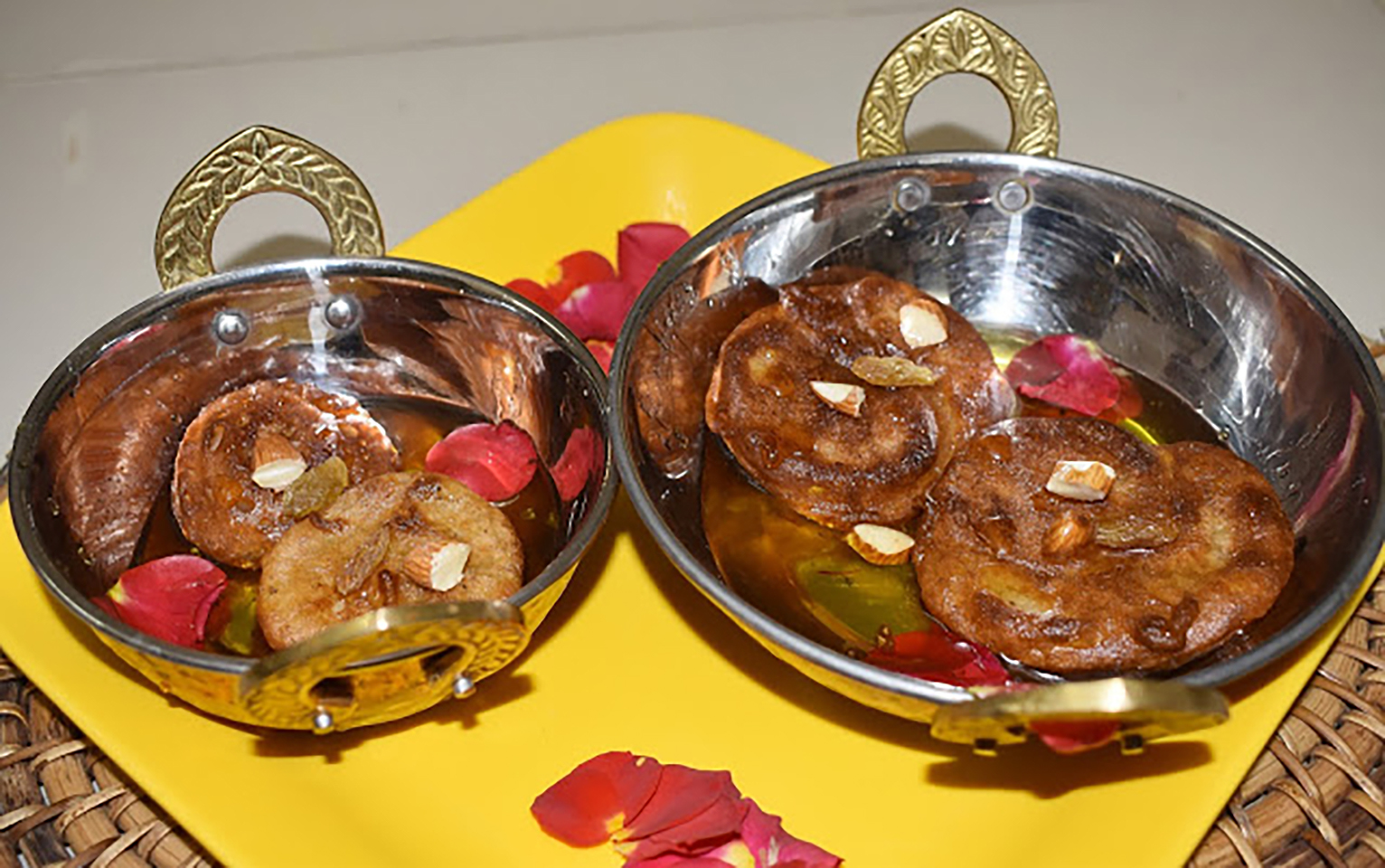Banana Malpua (Fried Indian Pancake for Diwali) recipe
All Recipes World Cuisine Recipes Asian IndianIngredients
- 1 cup milk 2 cups white sugar, divided 1 ½ cups water 5 pods green cardamom, crushed, or more to taste 7 saffron strands, or more to taste 2 ripe bananas 1 cup all-purpose flour ½ cup semolina flour (suji) 7 tablespoons sweetened condensed milk 2 teaspoons ground fennel seeds (saunf) 1 pinch salt 1 pinch baking soda ¾ cup sunflower oil 4 tablespoons ghee (clarified butter) 8 slivered almonds, or more to taste 8 raisins, or more to taste
Nutrition Info
- 428.9 caloriescarbohydrate: 80 gcholesterol: 24.4 mgfat: 11.3 gfiber: 1.6 gprotein: 4.6 gsaturatedFat: 5.6 gservingSize: -sodium: 89.6 mgsugar: 64.4 gtransFat: : -unsaturatedFat: : -
Directions Banana Malpua (Fried Indian Pancake for Diwali)
Directions
-
Heat milk in a small saucepan over medium heat until it begins to bubble. Remove from heat and keep warm.
Bring 1 1/2 cups sugar and water to a boil in another saucepan. Add cardamom and saffron. Boil until syrup is thick and sticky, 4 to 7 minutes. Pour syrup into a bowl and place it over warm water to keep warm.
Blend warmed milk, remaining 1/2 cup sugar, bananas, flour, semolina, condensed milk, fennel, salt, and baking soda in a food processor until smooth, not be too thick or too runny. Cover and let rest, at least 30 minutes and up to 4 hours.
Heat oil and ghee in a nonstick pan over medium-high heat. Reduce heat to low. Drop 1 large spoonful of batter into the center to make a 2-inch pancake. Cook until edges turn golden brown, about 2 minutes. Flip and fry until both sides are golden, 1 to 2 minutes more. Remove with a slotted spoon and let cool. Repeat with remaining batter.
Dunk cooled pancakes into the syrup, one by one. Garnish with almonds and raisins.

